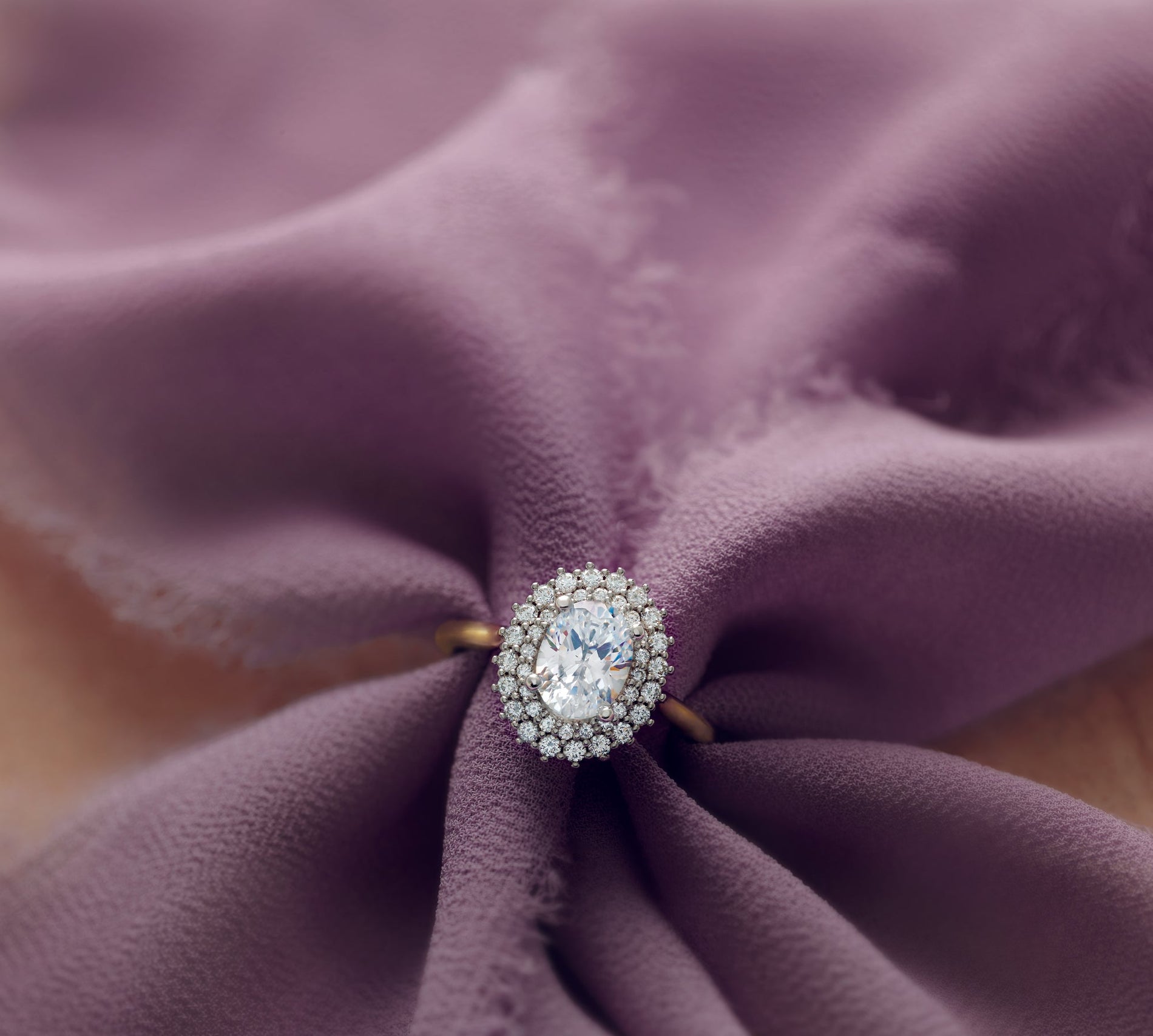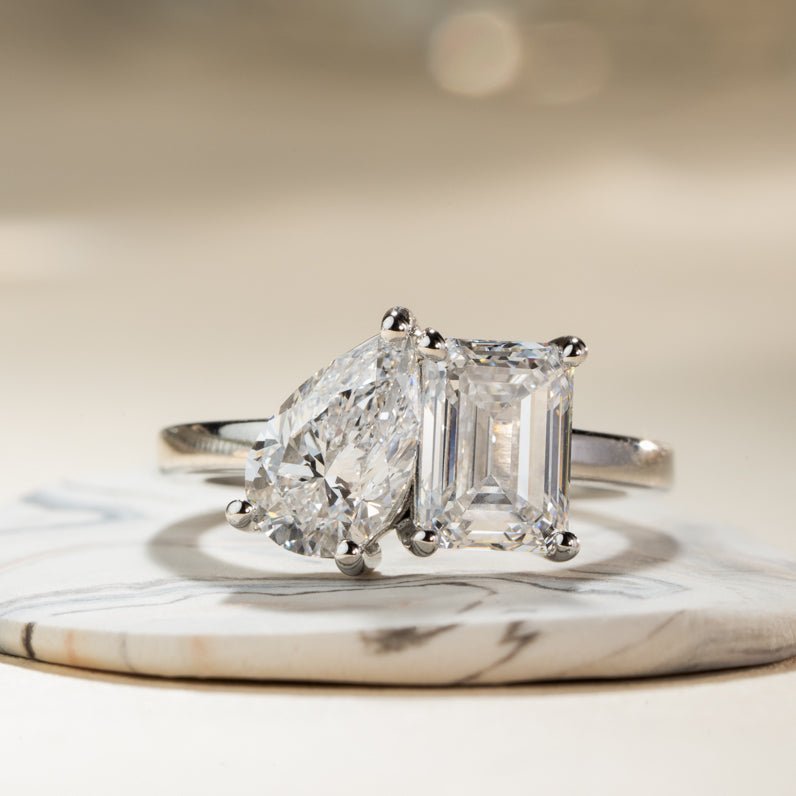Diamonds have traditionally been a symbol of luxury and status. However, with the growing awareness of ethical and environmental concerns associated with diamond mining, lab-created diamonds have become an attractive alternative for consumers.

The demand for lab-created diamonds has surged in recent years, partly due to their affordability compared to natural diamonds. This article aims to explore the cost of lab-created diamonds, including the factors that affect their price and how they compare to natural diamonds.
The process of creating lab-created diamonds involves replicating the conditions that naturally occur deep inside the earth's mantle. High pressure and high temperature are used to create a carbon crystal that is identical in structure to a natural diamond.
While this process requires advanced technology and specialized equipment, it is significantly less expensive than mining natural diamonds from mines across the globe. As such, lab-created diamonds are often more affordable than their natural counterparts, making them an appealing option for budget-conscious consumers or those who prioritize ethical considerations over traditional luxury items.
Key Takeaways
- Lab-created diamonds are more affordable than natural diamonds, with prices ranging from 20-30% lower on average.
- Lab-grown diamonds require less energy to produce than mined diamonds and have a more transparent production process, offering an ethical and sustainable alternative.
- Factors determining the value of lab-created diamonds include size, color, clarity, and cut, which replicate conditions that occur deep inside the earth's mantle.
- Personal values and preferences should be considered when choosing between natural and lab-created diamonds, and research is important to make an informed decision.
The Process of Creating Lab-Created Diamonds
The process of creating lab-created diamonds involves using high pressure and high temperature to replicate the conditions necessary for diamond formation in nature. This is achieved by placing a small diamond seed into a chamber and surrounding it with carbon-rich gases.
The chamber is then heated to temperatures exceeding 2000 degrees Celsius, while also being subjected to pressures up to 725,000 pounds per square inch. As the gases within the chamber begin to cool and solidify, they form around the diamond seed, gradually building layer upon layer until a rough diamond crystal is formed.
The resulting stone may require further cutting and polishing before it can be used in jewelry or other applications. The efficiency of this process has improved over time, leading to lower production costs for lab-created diamonds. However, there are still several factors that affect their overall cost when compared to natural diamonds.
Factors That Affect the Cost of Lab-Created Diamonds
Various factors play a significant role in determining the value of laboratory-grown diamonds. One of the most important factors is the size of the diamond, as larger diamonds require more time and resources to manufacture.
Additionally, the color and clarity of lab-created diamonds can also affect their

price, with higher quality stones generally costing more than those with visible flaws or tinges of color.
Another factor that can impact the cost of lab-created diamonds is their shape or cut. Certain cuts, such as round brilliant shapes, are more popular and therefore tend to be priced higher than less common shapes like marquise or pear.
Beyond this, some manufacturers may add additional treatments or coatings to enhance a diamond's appearance, which can increase its price further still.
Ultimately, when comparing prices between natural and lab-grown diamonds, it's important to consider all these factors in addition to traditional elements like carat weight. While lab-grown diamonds may appear cheaper at first glance due to their lower production costs relative to mined stones, they can still vary greatly in price depending on a range of different characteristics.
This makes careful comparison shopping essential for anyone looking to find the best deal on high-quality diamond jewelry.
Comparison of Lab-Created Diamonds vs. Natural Diamonds
In the world of gemstones, there is an ongoing debate about the superiority of naturally occurring diamonds versus their laboratory-grown counterparts. While natural diamonds have been coveted for centuries, lab-created diamonds are a relatively new addition to the market.
One major factor that sets lab-created diamonds apart from their natural counterparts is cost. Lab-created diamonds tend to be less expensive than natural ones, with prices ranging from 20-30% lower on average. This is because lab-created diamonds do not require costly mining operations or involve the same level of risk and uncertainty associated with finding high-quality natural stones.
However, despite this cost advantage, many consumers still prefer natural diamonds over lab-grown ones due to emotional and symbolic reasons. Natural diamonds have long been associated with love and commitment, making them a popular choice for engagement rings and other significant jewelry pieces. Additionally, some people may view lab-created stones as less valuable or "fake" compared to natural ones.
As we consider the pros and cons of lab-created vs. natural diamonds, it's important to also consider sustainability and ethical considerations in diamond mining practices. [Transition into next section].
Sustainability and Ethical Considerations
Sustainability and ethical considerations play a crucial role in the process of diamond mining, as the environmental impact and human rights issues associated with it can be significant. Here are some points to consider when thinking about whether lab-created diamonds might be a more sustainable option:
- Lab-created diamonds require less energy to produce than mined diamonds.
- Diamond mining can have devastating effects on local ecosystems, including deforestation and soil erosion.
- There are serious ethical concerns surrounding diamond mining, such as forced labor and exploitation of workers in developing countries.
- The production of lab-created diamonds is more transparent than the diamond mining industry, which has been criticized for lack of accountability and oversight.
- Buying lab-created diamonds can help reduce demand for mined diamonds, potentially leading to a decrease in unethical practices.
It's clear that there are many factors to consider when deciding between natural or lab-created diamonds. By being informed about sustainability and ethical considerations, consumers can make choices that align with their values. In the next section, we will explore how to make an informed decision when buying diamonds.
Making an Informed Decision When Buying Diamonds
When it comes to selecting a precious stone that embodies timeless elegance, nothing quite captures the essence of beauty like a diamond. However, with the rise of lab-created diamonds in recent years, consumers now have more options to choose from when making their purchase. While natural diamonds have been valued for their rarity and unique characteristics, lab-grown diamonds offer an ethical and sustainable alternative that is becoming increasingly popular among buyers.

To make an informed decision when buying diamonds, it's important to consider both the benefits and drawbacks of each option. Natural diamonds are formed over millions of years deep within the earth's mantle and are considered rare commodities due to their limited supply. On the other hand, lab-grown diamonds are created in controlled environments using advanced technology that mimics the conditions under which natural diamonds form. While they may lack the scarcity of natural stones, lab-grown diamonds offer several advantages over their mined counterparts.
One way to compare these two types of diamonds is by looking at factors such as cost, quality, and environmental impact. The following table provides a quick overview of some key differences between natural and lab-created diamonds:
| Attribute | Natural Diamonds | Lab-Created Diamonds |
|---|---|---|
| Cost | Higher | Lower |
| Quality | Varies | Consistent |
| Environmental Impact | High (mining) | Low (energy usage) |
Ultimately, whether you choose a natural or lab-created diamond will depend on your personal values and preferences. Some may prefer the traditional appeal of natural stones while others prioritize sustainability and ethics in their purchasing decisions. Whatever your choice may be, it's important to do your research beforehand so that you can feel confident in your decision and enjoy your beautiful new piece for years to come.
Conclusion
The process of creating lab-created diamonds involves replicating the conditions that create natural diamonds, but through artificial means. The cost of lab-created diamonds is influenced by various factors such as size, carat weight, color, and clarity. However, compared to natural diamonds, they are generally less expensive.
Lab-created diamonds have become a popular alternative to natural diamonds due to their affordability and ethical considerations. They offer a sustainable option for consumers who prioritize environmental responsibility and human rights in diamond mining.
In fact, according to a report by Morgan Stanley Research, the lab-grown diamond market could reach $15 billion by 2035. This indicates an increasing demand for sustainable and ethical alternatives to traditional mining practices.
As consumers continue to prioritize sustainability in their purchasing decisions, it highlights the importance of understanding the true cost of products beyond just financial value.







